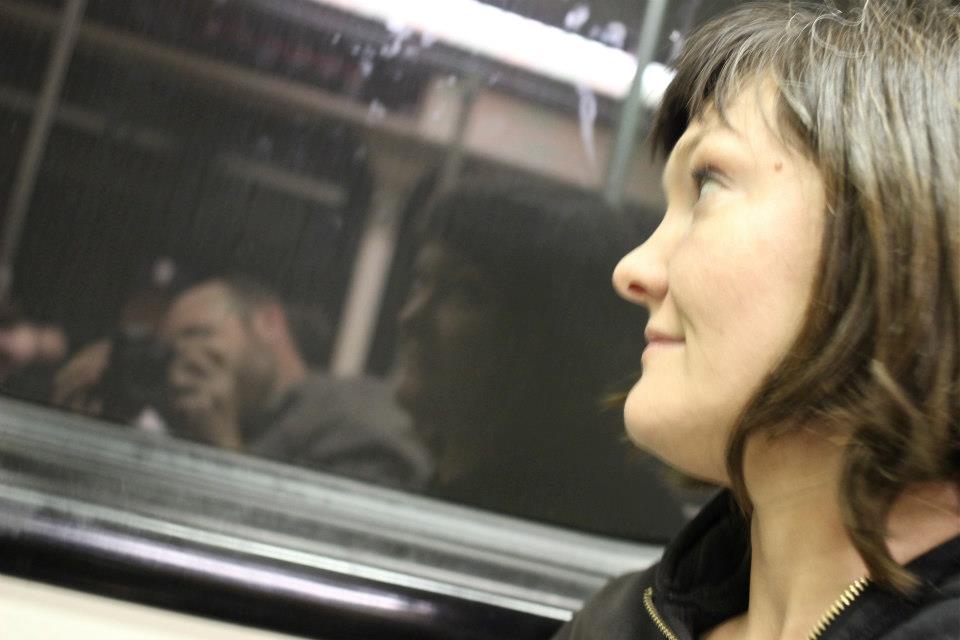
by Sarah Lanius
Last week members of the Bus Riders Union attended the Mayor and Council hearing on the RTA/County/City of Tucson plan to turn Broadway from Euclid/Park to Country Club into six lanes of traffic. Lots of ideas were bounced around regarding how the Broadway corridor can best serve the surrounding neighborhoods and long-time businesses located there, and to what extent that means more car-centric asphalt. Well, actually, the debate last week was largely expressed through four dominant arguments (and one additional mammoth phantom framework that has haunted the whole process). Simply put, these arguments for and against the Broadway widening looked something like this:
- (In support of more asphalt) Businesses have been waiting to know if it is safe to invest in their buildings, so the city should put them out of their misery and demolitish some buildings and give certainty to others moving forward. Reinvestment in the area can’t happen without the RTA money.
- (In support of more asphalt) Since the plan started as 8 lanes and now is 6 lanes with bus pullouts and wider bike lanes, it is a pragmatic compromise and the city should approve it.
- (Against more asphalt) The planning model that the RTA is following is out of step with the current moment and the future of cities that will be based on neighborhoods that nurture walkability, transit, and a mixture of residential and commercial uses.
- (Against more asphalt) The plan is meant to accommodate increases in cars that are not justified by current traffic studies or future projections. So what’s the deal?
What is the deal? The scary phantom framework lurking in the background here sure looks like old growth-machine politics stemming from the RTA and the County. Both have taken a rigid view of how the funds intended for the Broadway improvements (AKA the widening) can be used, and are tying the City of Tucson’s hands in being able to actually make the corridor work for the people. It’s time to get real about Broadway, and the Bus Riders have a plan to get us there:
- Broadway (the entire extent) should have a dedicated bus lane now.
- There should be NO bus pull-outs. Pull-outs slow down and burden the transit system.
- Busses should have signal priority at all intersections.
- These developments should happen now and RTA Broadway monies should be used to develop the dedicated bus lanes and accompanying infrastructure.
A dedicated bus lane along Broadway goes further to support the existing residents and businesses along the corridor than the RTA plan of 6 to 8 lanes for cars ever could. Paving more lanes to move cars through the city serves no one and wrecks our planet. A dedicated lane with signal priority support riders’ ability to get off and on along the line for work, shopping, or visits with friends. If we want to talk seriously about our future then let’s put transit and economic-environmental justice at the forefront and create a dedicated bus lane now.

Es Hora de Ser Realista Acerca del bulevar Broadway: La Perspectiva de los usuarios del Camión
Por Sarah Lanius
La semana pasada Miembros de la Unión de Pasajeros fueron a la sesión del Alcalde y el Consejo en la RTA/País/Ciudad del plan de Tucson para convertir el bulevar Broadway desde Euclid/Park a la country club en seis carriles. Muchas ideas fueron expuestas en como el bulevar beneficiaria mejor al vecindario y negocios localizados ahí. Bueno, más bien el debate de la semana pasada tuvo cuatro argumentos muy fuertes (en particular mammoth phantom framework que debatió todo el proceso). Este argumento por expandir el bulevar Broadway se mira así:
- (en apoyo a más pavimento) Los negocios han estado esperando para saber si es seguro invertir en sus edificios, así que la ciudad debería compadecerse de ellos y darles la confianza a los que quieres progresar. No se puede reinvertir en el área sin el dinero de la RTA.
- (en apoyo a más pavimento) Como el plan empezó con 8 carriles y ahora son 6 con campo para las paradas del camión y un carril más amplio para las bicicletas, es una negociación lógica y la ciudad debería aprobarla.
- (en contra de más pavimento) El plan que tiene la RTA está fuera del momento y del futuro de las ciudades que se basan el los vecindarios que apoyan el camino, el tránsito, y una mezcla de usos residenciales y comerciales.
- (en contra de más pavimento) El plan significaba acomodar el incremento de los carros que no son aceptados por el estudio del tráfico o los efectos futuros. ¿Así que cúal es el acuerdo?
¿Cuál es el acuerdo? El tétrico phantom framework esperando en el fondo de seguro parece una maquina vieja derivada de la RTA y el País. Los dos tienen un punto de vista muy firme de como deben ser usados los fondos para ampliar el bulevar, y están tratando de hacer que la Ciudad de Tucson haga una vereda para la gente que camina. Es tiempo de ser realista con respecto al bulevar Broadway, y los usuarios de los autobuses tienen un plan para llegar ahí:
- El bulevar Broadway (toda la ampliación) debería ser para hacer un carril dedicado para los camiones ahora.
- No debería haber las paradas de camión (a la orilla de la calle), hacen que el tráfico sea más despacio.
- Los camiones deberían tener señales en todas las intercesiones.
- Este desarrollo debería hacerse ahora y el dinero para el bulevar de la RTA debería ser usado para ampliar los carriles para los camiones y sus servicios básicos.
Un carril para el camión en el bulevar Broadway y la vereda deben ser comenzadas para apoyar a los residente y negocios ya existentes en lugar del plan de la RTA de los 6 u 8 carriles. Pavimentar más carriles no le ayuda a nadie y daña el planeta. Un carril dedicado al camión con señales apoyaría primeramente a los usuarios para subir y bajar del camión para ir a sus trabajos, de compras, o visitar amigos. Si queremos hablar seriamente de nuestro futuro entonces vamos a poner el transporte y la justicia de la economía ambiental al frente y crear un carril dedicado a los camiones ahora.
